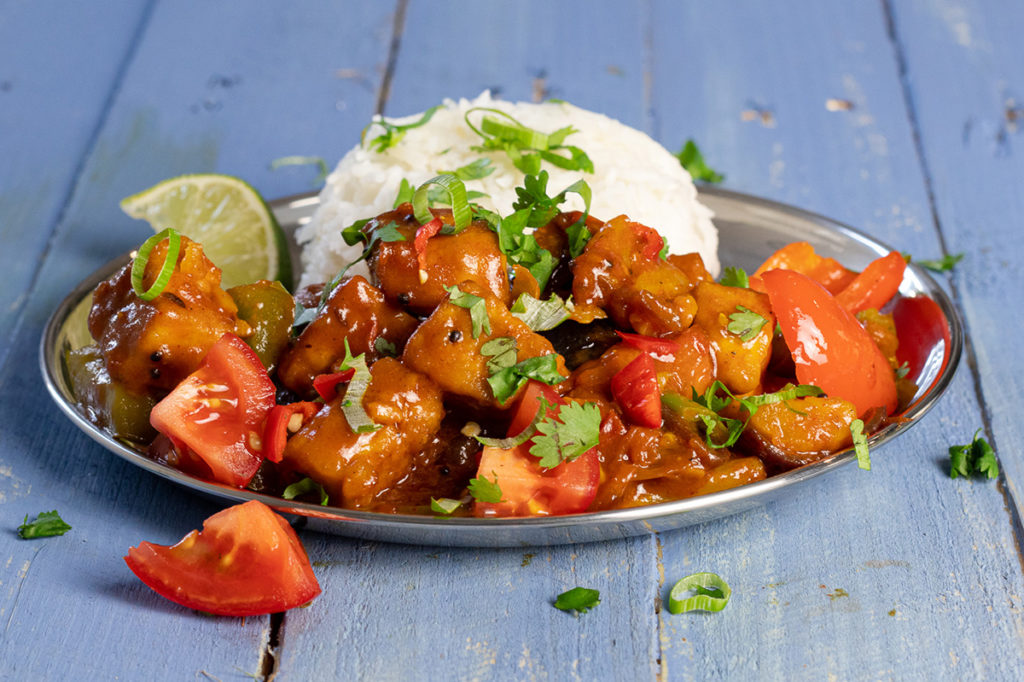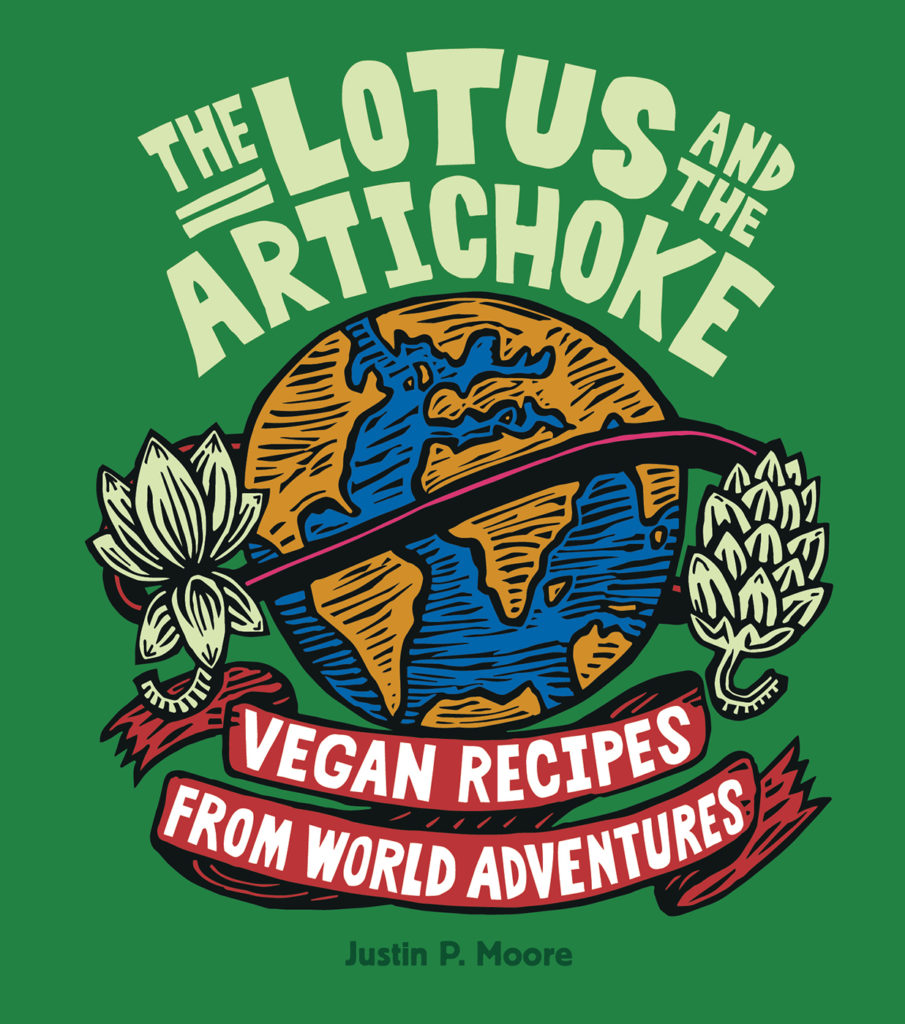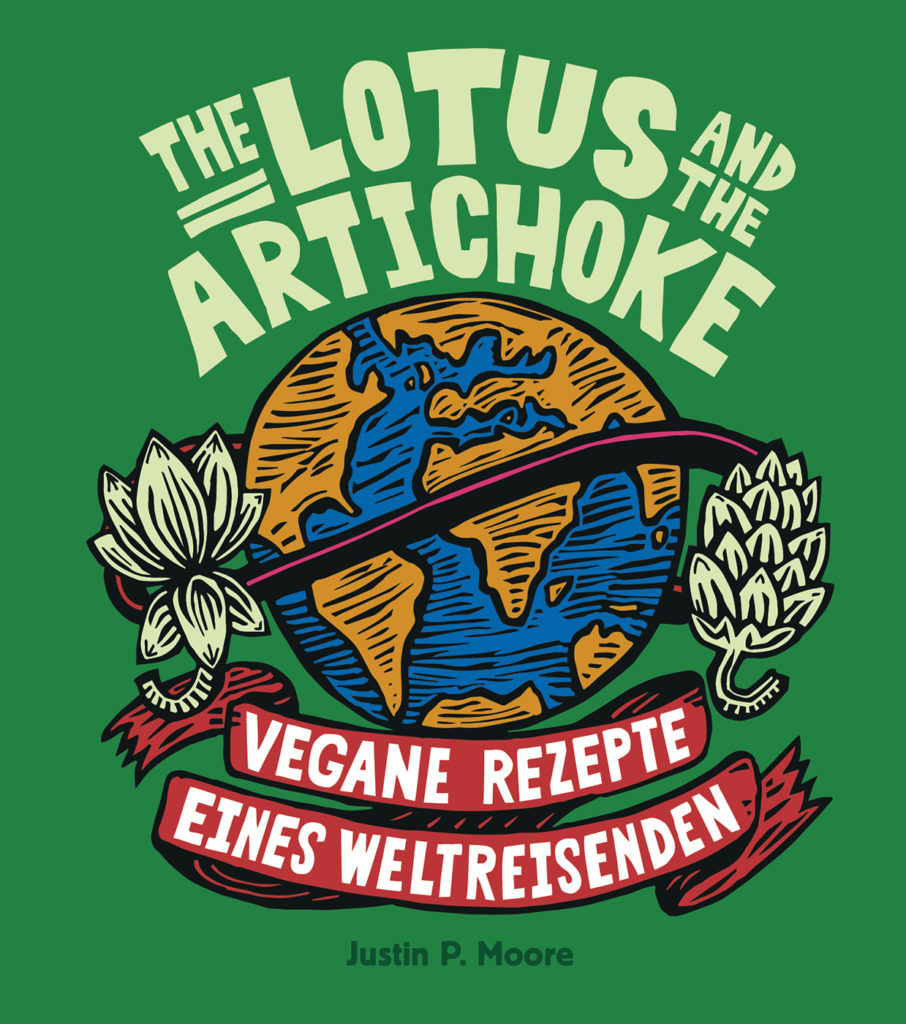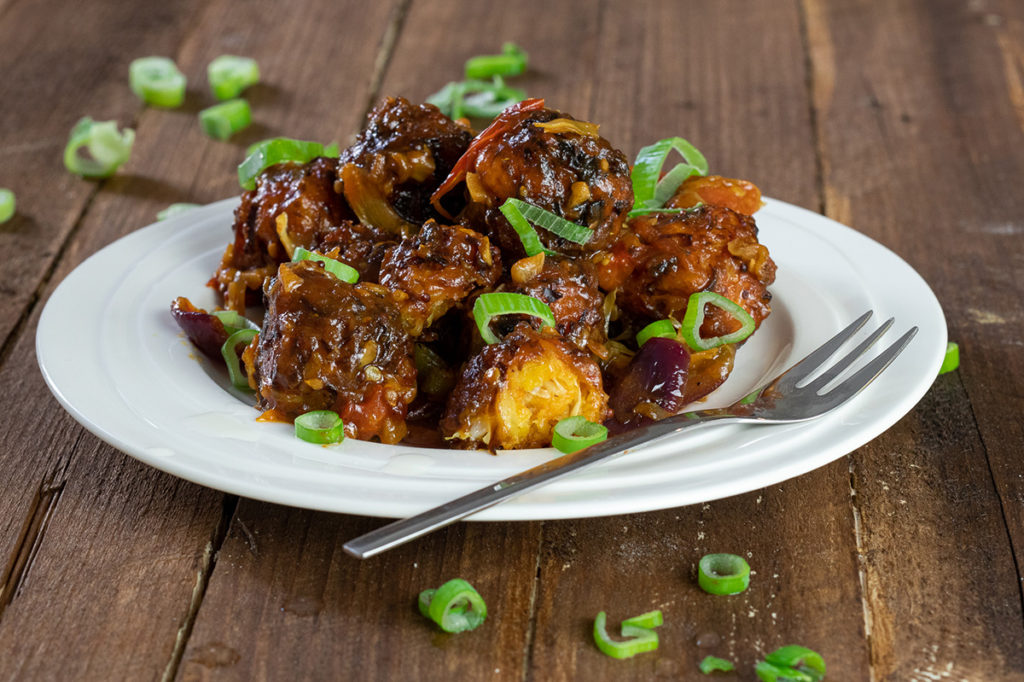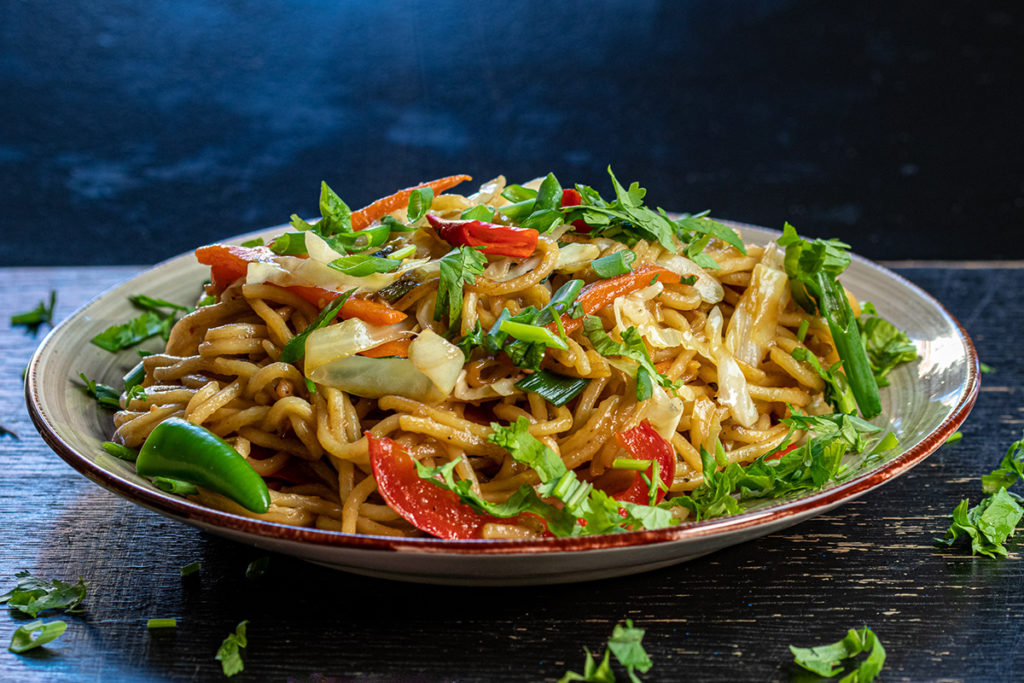
This recipe for Indochinese Hakka Noodles is inspired by countless dishes I had in my travels in India, as well as meals in Southeast Asia (especially Malaysia). I’ve been making variations of it for years, wherever I’ve lived. I got to experience it many times while living in Amravati, India for a year – some of my favorite restaurants in the city served amazing Indochinese dishes, prepared by Indian cooks who had specialized in Chinese cooking – and who obviously brought their own culinary influences, both personal and cultural to their recipes.
Hakka noodles are super simple to make and this dish goes together in about half an hour. You can, of course, use whatever vegetables you’ve got on hand. I’ve included several variations of the recipe; one of my favorites is the one with melted, shredded vegan cheese. I also love to add tofu cubes.
Hakka Noodles
with cabbage, carrot & red pepper
serves 2 to 3 / time 30 min
Recipe from The Lotus and the Artichoke – INDOCHINESE
(Rezept auf Deutsch unten)
- 7 oz (200 g) quick-cooking wheat noodles
- 1/2 tsp salt
- 1 tsp sesame oil
- 2 cups (180 g) cabbage chopped
- 1 medium (100 g) carrot sliced
- 1/2 medium (100 g) red pepper sliced
- 2–3 spring onions chopped
- 2–3 cloves garlic crushed orfinely chopped
- 1 1/2 in (4 cm) fresh ginger finely chopped
- 1–2 green chilies seeded, sliced optional
- 2 Tbs vegetable oil
- 1/2 tsp coriander ground
- 1/2 tsp black pepper ground
- 1/4 tsp white pepper ground
- 2–3 Tbs soy sauce
- 1 Tbs rice vinegar or lemon juice
- 1 Tbs sugar
- 1/2 tsp salt
- handful fresh coriander chopped
- Cook noodles in a pot of boiling water with 1/2 tsp salt for 5–7 min. Noodles should be slightly undercooked. Drain and rinse with cold water. Toss with sesame oil and set aside.
- Heat vegetable oil in a large pan or wok on medium high heat.
- Add chopped spring onions white ends, garlic, ginger, and green chilies. Add ground coriander, black pepper, and white pepper. Fry, stirring constantly, until richly aromatic and garlic is browned, about 2–3 min.
- Add chopped cabbage and carrot. Continue to stir-fry, until carrots start to soften, about 4–5 min.
- Add sliced red pepper. Continue to fry, stirring often, another 3–4 min.
- Add cooked noodles and mix well. Add soy sauce, rice vinegar or lemon juice, sugar, and salt. Continue to fry, stirring often, until noodles are scorched, another 3–5 min. Remove from heat.
- Garnish with chopped spring onion greens and fresh coriander and serve.
Variations:
Curry leaves: Add 10–15 fresh or dried curry leaves with onions, garlic, ginger, and chilies.
Vegetables: Substitute or add chopped broccoli, celery, mushrooms, baby corn, tomatoes, or other vegetables. Seitan, tofu, mock meat: Add chopped seitan, tofu, or vegan meats after adding vegetables. Adjust frying time as needed. Adjust salt and soy sauce to taste. Cheesy: After the noodles are scorched and the dish is almost done, top fried noodles with a handful of shredded vegan cheese. Mix a few times, add 1–2 Tbs of water, immediately cover the pot, turn off the heat, and let the steam melt the cheese.
Dieses Rezept für indochinesische Hakka Noodles ist inspiriert von unzähligen Gerichten, die ich auf meinen Reisen durch Indien gegessen habe – und auch in Südostasien, besonders in Malaysia. Ich mach das Gericht in verschiedenen Varianten schon seit Jahren, egal wo ich gerade wohne. Als ich ein Jahr lang in Amravati, Indien gelebt hab, hatte ich öfter die Gelegenheit, das Gericht zu essen – einige meiner Lieblingsrestaurants dort hatten richtig gute indochinesische Gerichten. Die wurde von indischen Köchen gemacht, die sich auf chinesisches Kochen spezialisiert hatten – und dabei natürlich ihre eigenen Einflüsse mit reingebracht haben, sowohl kulturell als auch ganz persönlich.
Hakka Noodles sind ganz einfach zu machen, und das Ganze steht in ungefähr einer halben Stunde auf dem Tisch. Du kannst natürlich auch einfach das Gemüse verwenden, das du gerade da hast. Ich hab dir ein paar Varianten vom Rezept aufgeschrieben – eine meiner liebsten ist die mit geschmolzenem, veganem Reibkäse. Frittierte Tofuwürfel dazu finde ich auch super lecker.
Hakka Noodles
gebratene Nudeln mit Weiflkohl, Möhren & Paprika
2 bis 3 Portionen / Dauer 30 Min.
Rezept aus The Lotus and the Artichoke – INDOCHINESICH
- 200 g Quick-Cooking-Weizennudeln
- 1/2 TL Salz
- 1 TL Sesamöl
- 2 Tassen (180 g) Weißkohl gehackt
- 1 mittelgroße (100 g) Möhre gehackt
- 1/2 mittelgroße (100 g) rote Paprika geschnitten
- 2–3 Frühlingszwiebeln gehackt
- 2–3 Knoblauchzehen zerdrückt oder fein gehackt
- 4 cm frischer Ingwer fein gehackt
- 1–2 grüne Chilischoten gehackt wenn gewünscht
- 2 EL Pflanzenöl
- 1/2 TL Koriander gemahlen
- 1/2 TL schwarzer Pfeffer gemahlen
- 1/4 TL weißer Pfeffer gemahlen
- 2–3 EL Sojasoße
- 1 EL Reisessig oder Zitronensaft
- 1 EL Zucker
- 1/2 TL Salz
- 1 Handvoll frisches Koriandergrün gehackt
- Weizennudeln mit 1/2 TL Salz in einem großen Topf mit kochendem Wasser 5 bis 7 Min. bissfest kochen. Abgießen und Sesamöl untermischen. Abdecken und beiseitestellen
- In einem großen Topf Öl auf mittlerer bis hoher Flamme erhitzen.
- Gehackte weiße Frühlingszwiebelringe, Knoblauch, Ingwer, grüne Chilischoten, Koriander, schwarzen Pfeffer und weißen Pfeffer hineingeben. 2 bis 3 Min. unter Rühren anschwitzen, bis es aromatisch duftet.
- Gehackten Weißkohl und Möhre hinzufügen. 4 bis 6 Min. anbraten, bis die Möhre weich wird.
- Rote Paprika einrühren. Unter Rühren weitere 3–4 min anbraten.
- Gekochte Nudeln hineingeben. Gut umrühren. Sojasoße, Reisessig oder Zitronensaft, Zucker und Salz einrühren. Unter Rühren 3 bis 5 Min. weiter anbraten, bis die Nudeln leicht angeschmort sind. Vom Herd nehmen.
- Mit grünen Frühlingszwiebelringen und gehacktem Koriandergrün garnieren und servieren.
Variationen:
Curryblätter: Eine Handvoll frische oder getrocknete Curryblätter zusammen mit den Frühlings-zwiebeln hineingeben. Gemüse: Brokkoli, Blumenkohl, Staudensellerie, Pilze, Maiskölbchen und/oder Tomaten hinzufügen. Tofu & Seitan: Gehackten Tofu, Seitan oder Fleischersatz vor dem Gemüse kurz anbraten. Cheese Noodles: Nachdem die Nudeln angeschmort sind, pflanzlichen Reibkäse darüberstreuen. Umrühren. Mit 1–2 EL Wasser besprenkeln. Abdecken. Käse 2 bis 3 Min. schmelzen lassen. Bei allen Variationen Kochzeit, Salz und Sojasoße anpassen.





